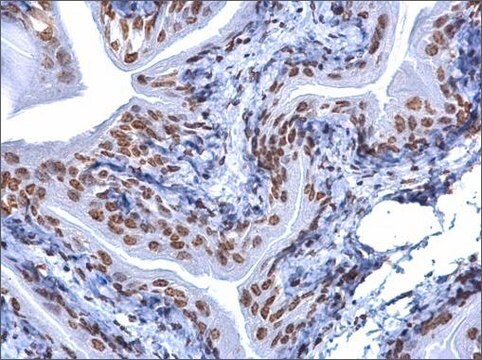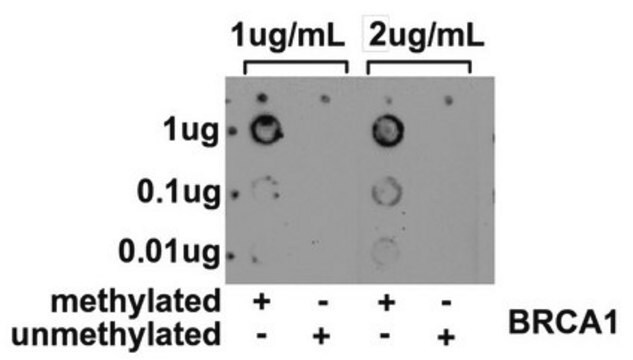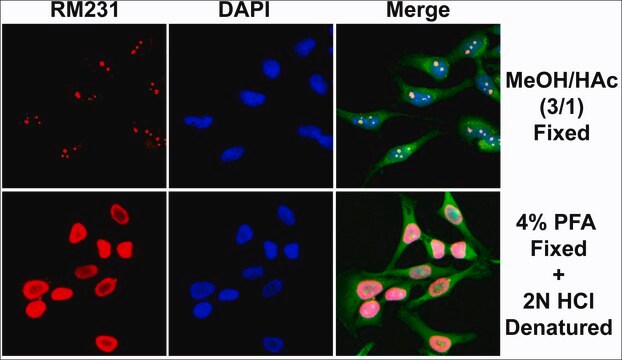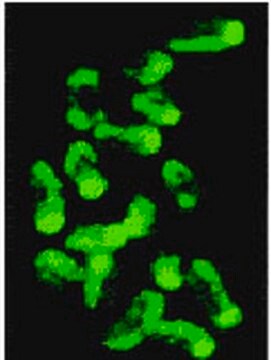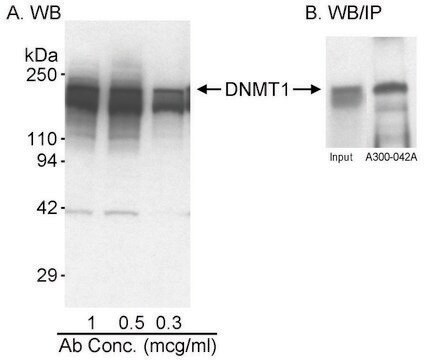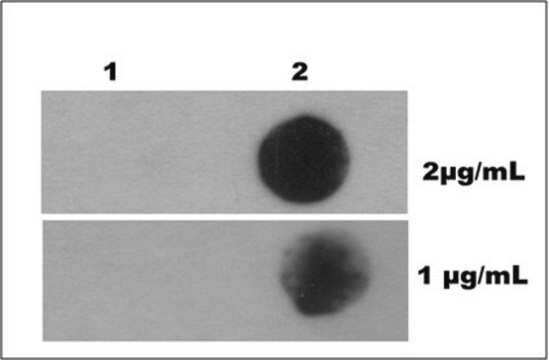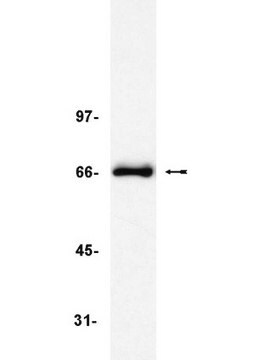MABE1081
Anti-5-Methylcytosine (5mC) Antibody, clone EDL MC-4
clone EDL MC-4, from mouse
Sinônimo(s):
5mC, 5-methylcytosine
About This Item
Produtos recomendados
fonte biológica
mouse
Nível de qualidade
forma do anticorpo
purified immunoglobulin
tipo de produto de anticorpo
primary antibodies
clone
EDL MC-4, monoclonal
reatividade da espécie (prevista por homologia)
all
técnica(s)
dot blot: suitable
immunoprecipitation (IP): suitable
Isotipo
IgG2aλ
Condições de expedição
ambient
modificação pós-traducional do alvo
unmodified
Descrição geral
Especificidade
Imunogênio
Aplicação
Immunoprecipitation Analysis: 2.5 µg from a representative lot immunoprecipitated 5 ng of DNA with 5-methylcytosine (5mC) modification, but not DNA with only 5-hydroxymethylcytosine (5hmC) modification or unmodified cytosine (Courtesy of Jeong-Heon Lee, Ph.D.; Chad Clark; Tamas Ordog, M.D.; Zhiguo Zhang, Ph.D. Epigenomics Development Laboratory, Epigenomics Program, Center for Individualized Medicine, Mayo Clinic, Rochester, Minnesota, USA).
Epigenetics & Nuclear Function
Qualidade
Dot Blot Analysis: 2 µg/mL of this antibody detected 25-100 ng of DNA with 5-methylcytosine (5mC), exhibiting less than 25% cross-reactivity toward 5-formylcytosine (5fC) and no detectable immunoreactivity toward 5-hydroxymethylcytosine (5hmC), 5-carboxylcytosine (5caC), or unmodified cytosine.
Descrição-alvo
forma física
Armazenamento e estabilidade
Outras notas
Exoneração de responsabilidade
Não está encontrando o produto certo?
Experimente o nosso Ferramenta de seleção de produtos.
Código de classe de armazenamento
12 - Non Combustible Liquids
Classe de risco de água (WGK)
WGK 1
Ponto de fulgor (°F)
Not applicable
Ponto de fulgor (°C)
Not applicable
Certificados de análise (COA)
Busque Certificados de análise (COA) digitando o Número do Lote do produto. Os números de lote e remessa podem ser encontrados no rótulo de um produto após a palavra “Lot” ou “Batch”.
Já possui este produto?
Encontre a documentação dos produtos que você adquiriu recentemente na biblioteca de documentos.
Nossa equipe de cientistas tem experiência em todas as áreas de pesquisa, incluindo Life Sciences, ciência de materiais, síntese química, cromatografia, química analítica e muitas outras.
Entre em contato com a assistência técnica